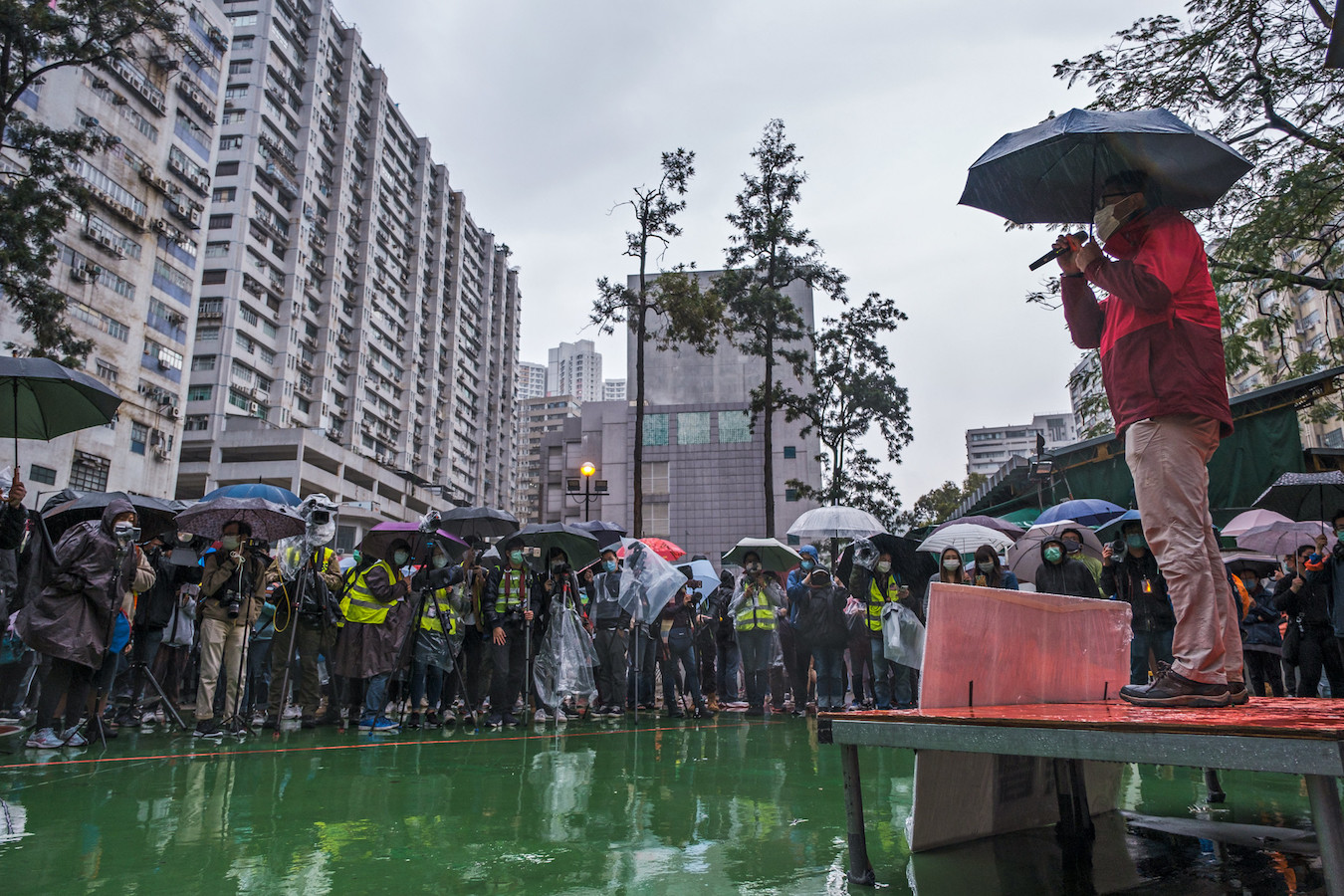by Brian Hioe
語言:
English
Photo Credit: Studio Incendo/Flickr/CC
PROTESTS TOOK place in Hong Kong over the weekend, with demonstrations against planned quarantine centers and clinics which would house patients who have contracted the COVID-19 coronavirus. Hong Kong currently has 57 COVID-19 cases, with one death having occurred so far.
Protests took place on Saturday in Kennedy Town, Tai Po, and Tin Shui Wai, though protests were largest in Tin Shui Wai and smaller in the other two districts. In Tin Shui Wai, a march was approved by police ahead of time, and involved around 500 participants. The march began at the Wang Yat Square at 3 PM and finished at the Tin Sau Light Rail station, with demonstrators setting fire to MTR equipment including a card reader. Demonstrations in Tai Po and Kennedy Town were against planned clinics in the area.
 Photo credit: Studio Incendo/Flickr/CC
Photo credit: Studio Incendo/Flickr/CC
Protests also took place on Sunday in Cheung Sha Wan, Fo Tan, Kowloon Bay, Kwai Chung, and Sai Kung. Protests in Kwai Chung and Cheung Sha Wan took place against plans to turn clinics at local jockey clubs into quarantine centers, these being the Cheung Sha Wan Jockey Club General Outpatient Clinic and the South Kwai Chung Jockey Club General Outpatient Clinic. A march that began at 9 PM from Richland Gardens to the Kai Yip Estate in Kowloon Bay led to clashes with police that began around 10:30 PM.
On both days, police in riot gear used pepper spray against demonstrators. More generally, in demonstrating against planned quarantine centers and clinics, critics claimed that the government planned to open these without adequate consultation with local residents and that they would be opened too close to residential buildings.
Notably, dissatisfaction against the Hong Kong government’s handling of the COVID-19 outbreak has blended into the demands of the last year of protests in Hong Kong, in terms of calls for more democratic governance and anger against police violence. The COVID-19 outbreak put a damper on protests, with protestors staying home in order to avoid contracting the disease and a resultant decline in large-scale protests. But anger against the Hong Kong government’s handling of the COVID-19 has in itself been a motivator for demonstrations, as continuing broader sentiments of dissatisfaction against the Hong Kong government.
Consequently, at demonstrations over the past weekend, many protestors carried banners reading “Restore Hong Kong, revolution of our times” (光復香港,時代革命), and chanted protest slogans from the past year of protests. Some slogans called for Hong Kong independence and criticized the Hong Kong government for its unwillingness to close the border between Hong Kong and China.
In the meantime, another stimulus for anger against the government from Hongkongers is shortages of medical masks, toilet paper, hand sanitizer, and other supplies for preventing the spread of COVID-19, due to fears of shortages having led to hoarding in Hong Kong. In an incident that made international headlines, 600 rolls of toilet paper were stolen in an armed robbery by robbers wielding knives earlier this week.
Interestingly enough, civil society groups including Joshua Wong’s Demosisto have taken to making independent arrangements to ship needed supplies into Hong Kong. Earlier this week, Demosisto imported 100,000 medical masks into Hong Kong, absorbing the shipping costs itself. Demosisto plans to import a further 1.2 million masks. Apart from providing needed relief, independent actions by Hong Kong civil society to combat the spread of COVID-19 further erode the authority of the Hong Kong government. While Hong Kong medical workers have resumed work, following an earlier strike, there continue to be calls for Hong Kong medical workers to halt work if the government does not improve safety conditions for them.
When thousands of #HKers queued for masks overnight, #HKGov still refused to take measures to stabilize supply and price amid #coronavirus. To combat citywide shortage and price-gouging, @demosisto has just bought another 1,200,000 masks and shipped to #HK. pic.twitter.com/ovNQ3UOJQL
— Joshua Wong 黃之鋒 😷 (@joshuawongcf) February 17, 2020
Indeed, Hong Kong government officials have generally provoked anger by remaining out of touch with the circumstances of ordinary Hongkongers. Hong Kong Chief Executive Carrie Lam, for example, has been reluctant to make public appearances wearing a medical mask on many occasions when even Chinese president Xi Jinping has taken to wearing medical masks publicly as a demonstration of the seriousness of the outbreak. Lam has also come under fire for failing to take measures to increase the availability of supplies for preventing the spread COVID-19, instead sometimes downplaying the severity of the outbreak or offering ineffectual press conferences.
As such, one expects anger against the Hong Kong government to continue. Even if it is true that the current epidemic may be a momentary damper on protests, one expects anger against the Hong Kong government for its handling of the COVID-19 outbreak to continue.

